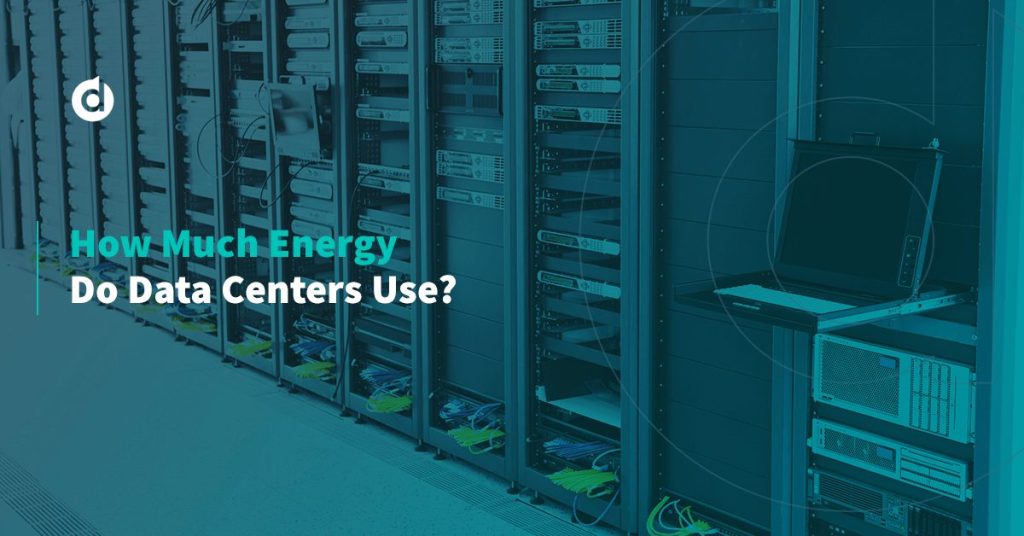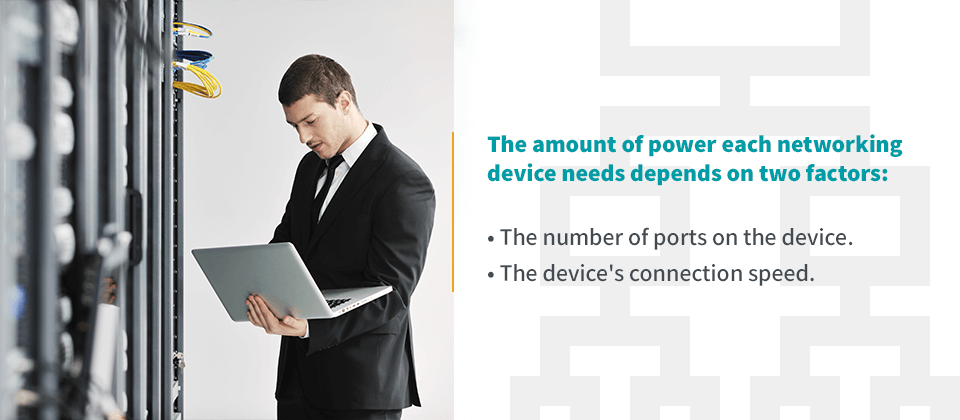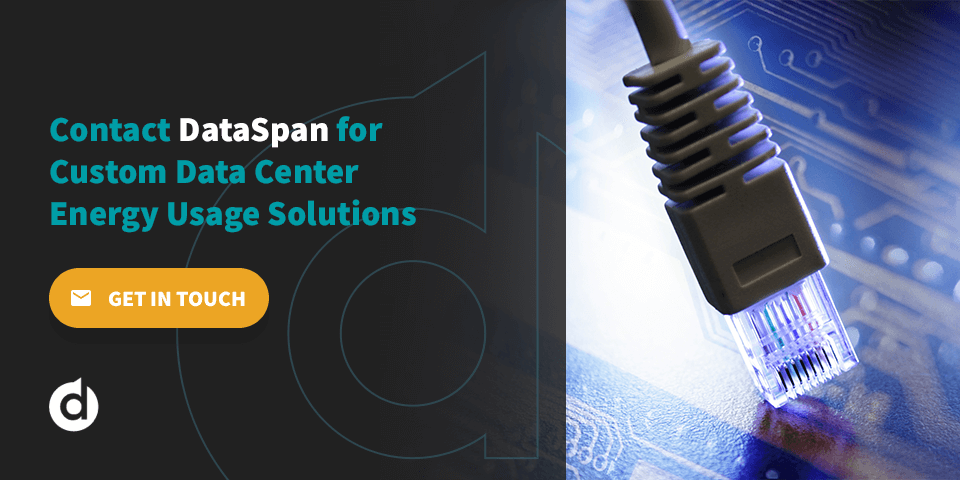
How Much Energy Do Data Centers Use?
According to estimates, data centers account for approximately 1% of global energy consumption. To lessen that consumption, hyperscale data centers, typically owned by Big Tech corporations, are pioneering new energy-efficient data center technologies at a rapid pace. For example, many are investing in renewable power sources like hydrogen fuel cells, wind and solar to create sustainable data centers with lower overall energy requirements.
Figuring out how much energy each component of your data center uses will help you identify areas for improvement, resulting in significant savings for your organization.
Drivers of Data Center Energy Consumption
Certain systems require more power than others, so they have a greater impact on your overall energy consumption. Usually, a data center uses the most energy on its servers and cooling systems, with networking equipment and storage drives close behind.
1. Servers
Tens of millions of servers are currently in use in data centers worldwide. Power proportionality, which measures the proportion of power used to the amount of time a server is active, is a key metric for determining a server’s energy efficiency. It is typically measured by finding the difference in power consumption when the server is at 0% load and 100% load.
Usually, the power proportionality falls somewhere between zero and one, with one being the most energy-efficient. Many times, though, servers operate well below their maximum capacity.
2. Cooling Systems
For many data centers, the cooling system is one of the most energy-intensive components in the facility. The average data center cooling system consumes about 40% of the center’s total power.
While it’s important to protect your equipment from overheating, excessive cooling often leads to data centers using more energy than necessary. Patchwork assembly can inhibit data center airflow, preventing cold air from reaching server inputs and increasing the risk of equipment overheating.
Planning out data center cooling and layouts in advance is essential for avoiding these problems.
3. Network Devices
In order for data center services to work properly, your servers need to connect to each other and the internet. While it’s difficult to calculate the exact amount of energy data centers need to access the internet, networking hardware like routers, switches and bridges have high power requirements.

The amount of power each networking device needs depends on two factors:
- The number of ports on the device.
- The device’s connection speed.
Networking equipment also generates a lot of heat, putting more demand on your cooling system to offset it.
4. Storage Drives
Data creation has grown exponentially over the past decade, with current projections estimating 181 zettabytes of data will exist by 2025. All that data needs to be stored somewhere, and the type of storage a data center uses has a significant impact on the amount of electricity it uses for its day-to-day operations.
Most solid-state drives (SSDs) are far more energy-efficient than hard disk drives (HDDs), which were the standard in data centers for decades. Depending on disk size, an HDD can use anywhere from 6 to 9 watts at maximum capacity. While this is lower than in previous years, power requirements for SSDs have remained mostly constant at around 6 watts per disk.
How to Calculate Overall Data Center Energy Consumption
Power usage effectiveness (PUE) is a helpful metric for determining data center energy efficiency. Your PUE is the ratio of power your whole facility uses compared to the power your computer equipment uses.
A PUE of 1.0 indicates perfect efficiency — all of your energy intake goes directly to your IT equipment. However, this score is difficult for most data centers to achieve because they must also power key infrastructure to support these systems. Therefore, a PUE of 1.5 to 1.8 is considered to be effective for most facilities.
That said, most data centers are likely operating at a PUE of 2.0 or above due to inefficient facility design, overcooling and poor management. To find your facility’s PUE, measure and add the power requirements for each of the following systems:
- Lighting and utilities
- Cooling
- Heating, ventilation and air conditioning
- Pumps
- IT equipment
Then, divide this number by the amount of power your IT equipment uses. This number is your PUE.
Ways to Improve Data Center Energy Efficiency
If your PUE is higher than you’d like, there are steps you can take to decrease that number. Here are a few ways you can eliminate excess energy consumption and work toward reducing your carbon footprint.
1. Optimize Your Cooling System
Overcooling is one of the biggest contributors to excess energy consumption. Whether your system includes a computer room air conditioner, free cooling, or cold and hot aisles, ensuring your cooling system can apply cooling techniques efficiently is key to reducing your facility’s energy footprint.
Making sure your facility follows data center cooling best practices is a good place to start. Rearrange racks and cooling units if needed to improve cooling efficiency. Then, when you need to add more equipment, plan how it will work with your cooling system beforehand to ensure proper airflow.
2. Switch to SSDs
HDDS use significantly more energy than their newer counterparts, which is why replacing them with SSDs wherever possible is a good place to start. In addition to using less power for themselves, SSDs reduce the load on your cooling system — because they do not contain moving mechanical parts like HDDs, they generate less heat.
Swapping some of your lower-tier storage to slower, larger low-energy drives can also help you improve energy efficiency by reducing the number of drives in your facility.
3. Virtualize and Consolidate Servers
Most servers operate at about 5% to 15% capacity while using full power. Therefore, you’re essentially using more energy to power less server utilization. Migrating data from your lightly used physical servers to virtual machines allows you to maximize server space and reduce the number of physical servers drawing power at any given time.
4. Consult With a Data Center Energy Expert
Whether you are switching to virtual infrastructure or changing your data center layout, it’s best to bring in expert assistance to ensure your project goes well. An experienced professional can help you evaluate your data center’s current energy expenditure and identify areas for improvement.
Additionally, working with an expert can help you keep costs low by recommending the best products within your budget. Look for a consulting company that takes a vendor-agnostic approach to ensure objectivity and full transparency.
Contact DataSpan for Custom Data Center Energy Usage Solutions
Improving your data center’s energy efficiency can do more than save your business money — it will also make achieving compliance with future standards much easier. Tackling this task now puts your organization in an excellent position to meet future demands.
Working with the experts at DataSpan can help you implement energy solutions. With almost five decades of experience in the data center industry, we have the knowledge and resources to create custom, energy-efficient solutions to meet your data center’s specific needs.
Contact us today by filling out our online form, or reach out to your local DataSpan representative. We’ll get in touch shortly with more information.








